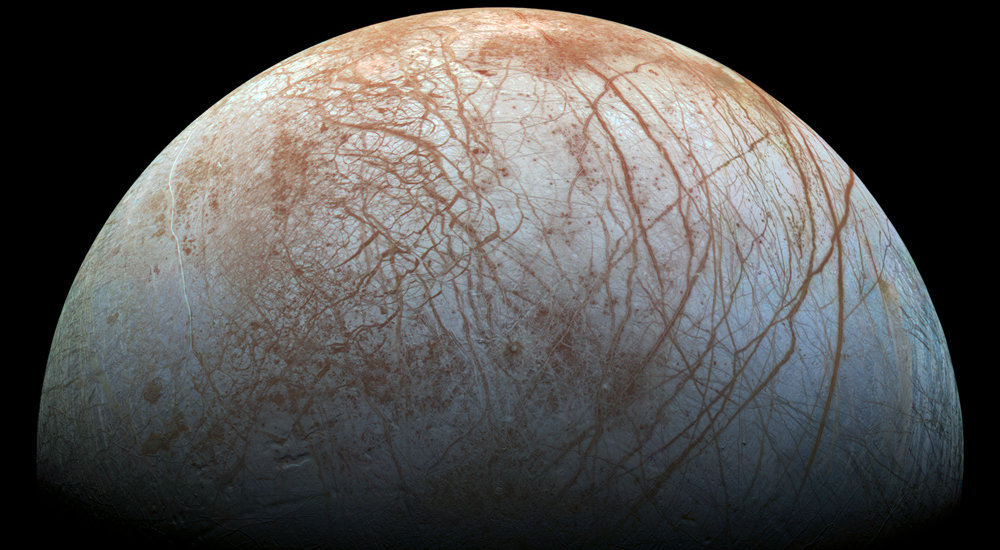Combined NASA ESA Jupiter System Mission
Europa Clipper would conduct detailed reconnaissance of Jupiter’s moon Europa and would investigate whether the icy moon could harbor conditions suitable for life.
Knowing exactly where a satellite is, is never a goal in itself, but a means to do proper research. Research on the gravitational fields and surface deformation of Jupiter’s icy moons Ganymede, Callisto and Europa, for example. And on the hidden oceans of moon Europa, that lie beneath the surface. TU Delft is taking part in the Jupiter Icy Moons Explorer JUICE, a satellite mission to Jupiter by the European Space Agency. JUICE is planned to be launched in 2022. The satellite will reach the giant gaseous planet eight years later.
Amazing precision
TU Delft has a standing reputation in orbit determination and geodynamical modelling of icy moons. As a result, TU Delft became co-investigator of two instruments for JUICE, laser altimeter GALA and tracking experiment PRIDE. “When the satellite reaches Jupiter, we are still able to pinpoint its position within a 100 meter”, Bert Vermeersen says. “That precision still amazes me, even though I know how we do it.” Vermeersen is Professor of Planetary Exploration. “My personal research interest is the geophysics of planets and moons. The measurements of the instruments on board are useless without knowing the position of the spacecraft. So orbit determination is an important aspect. The challenge it to get the absolute most out of the data.”
Tidal deformations
To track down JUICE, a network of Earth based radio telescopes is being used. “These telescopes receive the same radio signals from the satellite at different places on Earth and from different angles, which makes it possible to determine the position of the spacecraft. This technique is called VLBI, Very Long Baseline Interferometry.
On board of JUICE is also laser altimeter GALA, that will measure the distance from the spacecraft to Jupiter and its moons. Vermeersen: “We use it for studying the surface and the tidal deformations of Jupiter’s moons. It is exciting to learn so much more about them.”
Facts & Figures
Contact
Bert Vermeersen, L.L.A.Vermeersen@tudelft.nl


